What is an Electronic Business Card?
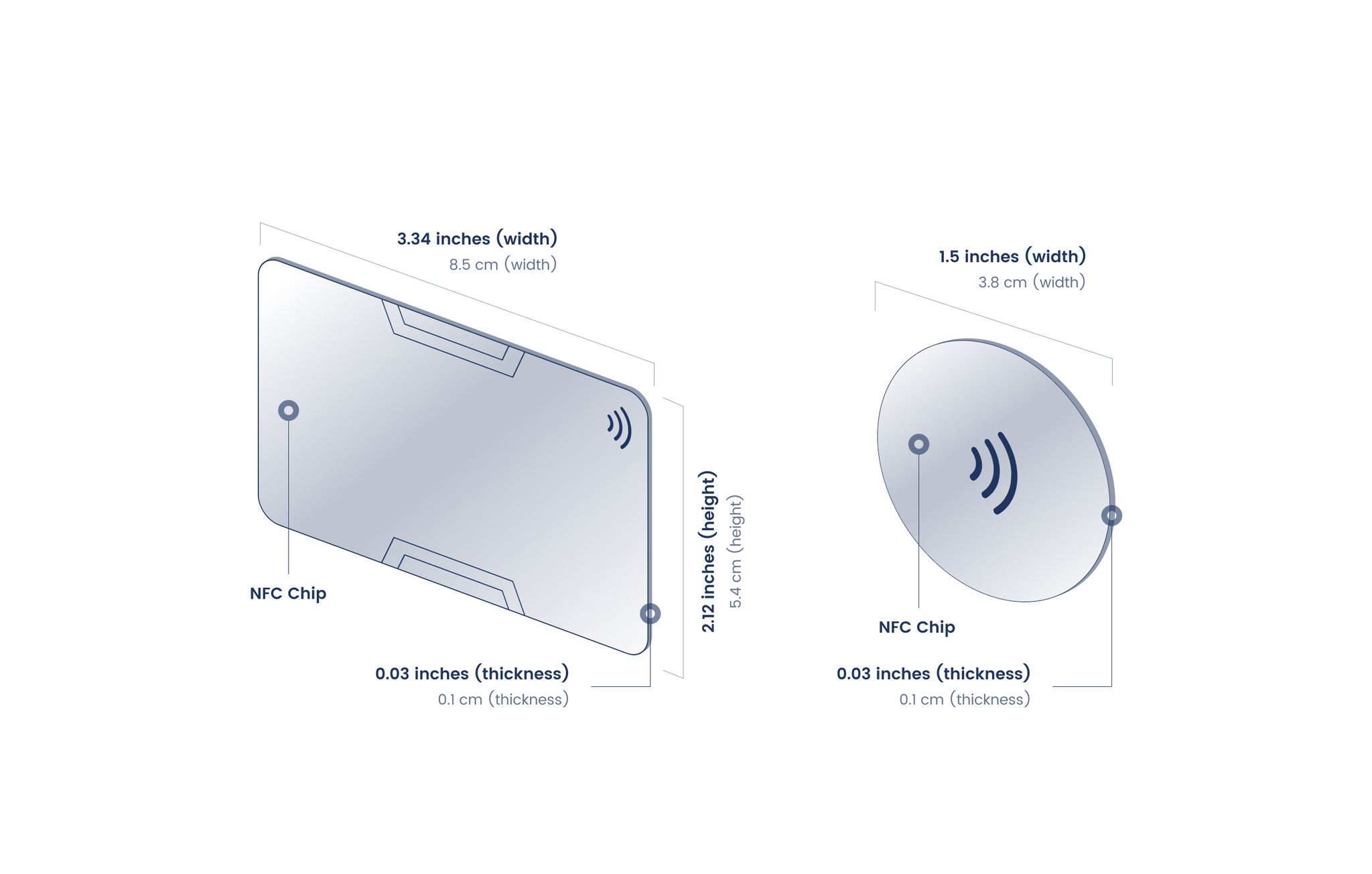
An electronic business card (EBC) is a card or card-sized physical device that allows its user to instantly transmit their contact information and other data to a recipient’s mobile device. EBC’s feature a near-field communication (NFC) chip with an integrated antenna for short-range wireless transmission of information. Some are also printed with a dynamic quick response (QR) code that is accessed using the recipient’s phone camera. EBC’s are small enough to be carried in a wallet or attached to a smartphone.
EBC’s come in various formats, but they all have similar functionality and the same basic anatomy. The most common EBC form factor has the size, shape, and appearance of a standard credit card. Some are plastic, like credit cards and ID cards, while others are offered in more premium materials like metal. They can be customized with color schemes, contact information, and logos, and many are printed with QR codes.
EBC’s are not limited to thin, rectangular, wallet-sized cards. The only real requirement is that the device be able to house an NFC chip, most of which are smaller than a fingernail. This flexibility allows for some innovation in the EBC market with devices like “dots”, which are in the form of thin discs. Dots have EBC functionality, but are smaller and feature an adhesive backing allowing them to be affixed to a convenient surface like a smartphone.
Why did electronic business cards emerge?
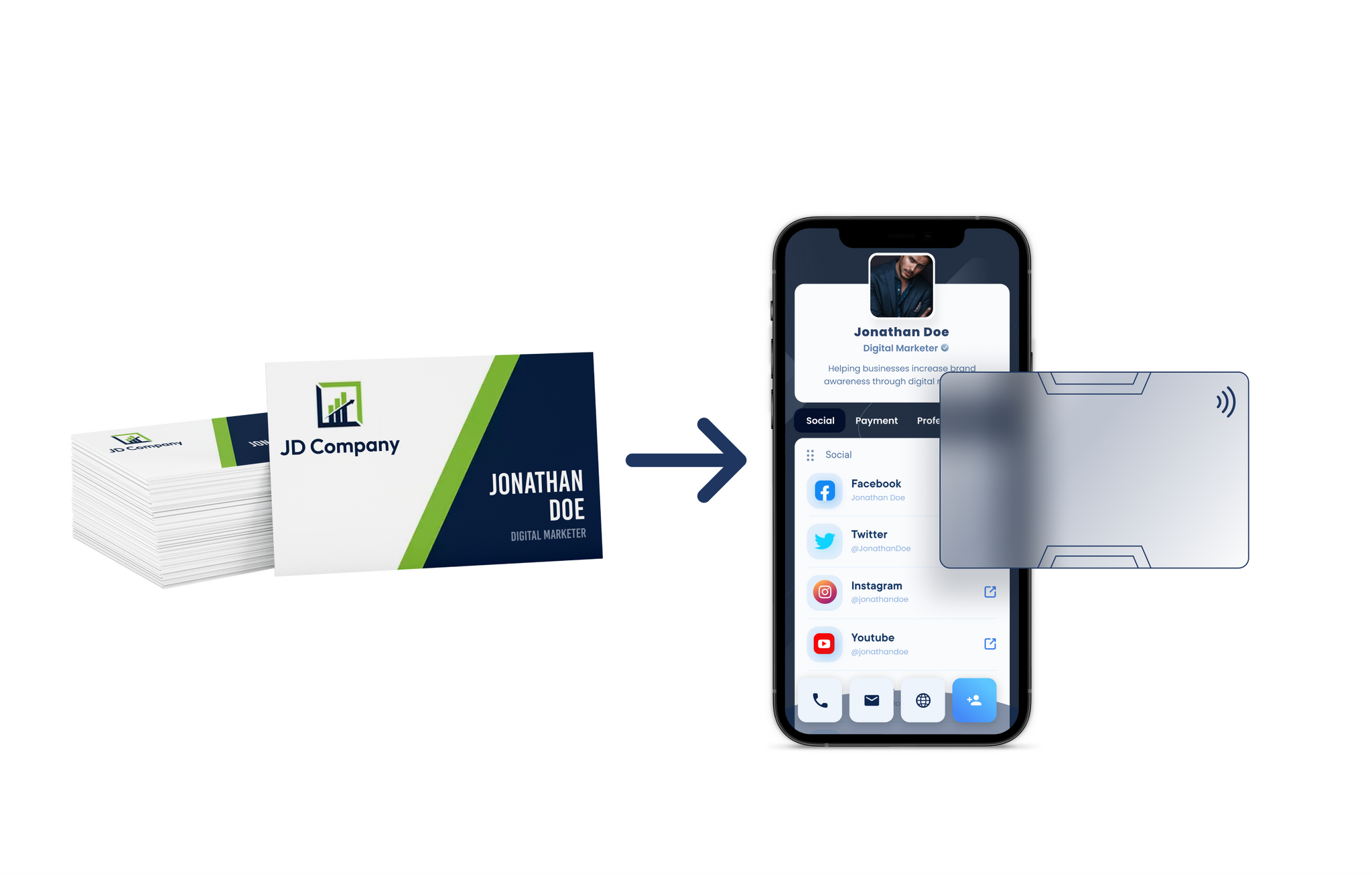
The trading of paper business cards (PBC’s) has largely survived as a tradition, even in the face of paper reduction and pandemic-driven social distancing. However, the exchange of contact information in person is still an integral part of building business relationships. The need to bridge the gap between the businesses card tradition and modern technology resulted in the recent emergence of the electronic business card (EBC).
EBC’s allow users to harness the tools and advantages of the communication age while still retaining some of the tactile, tangible attributes of traditional business cards.
How do electronic business cards work?
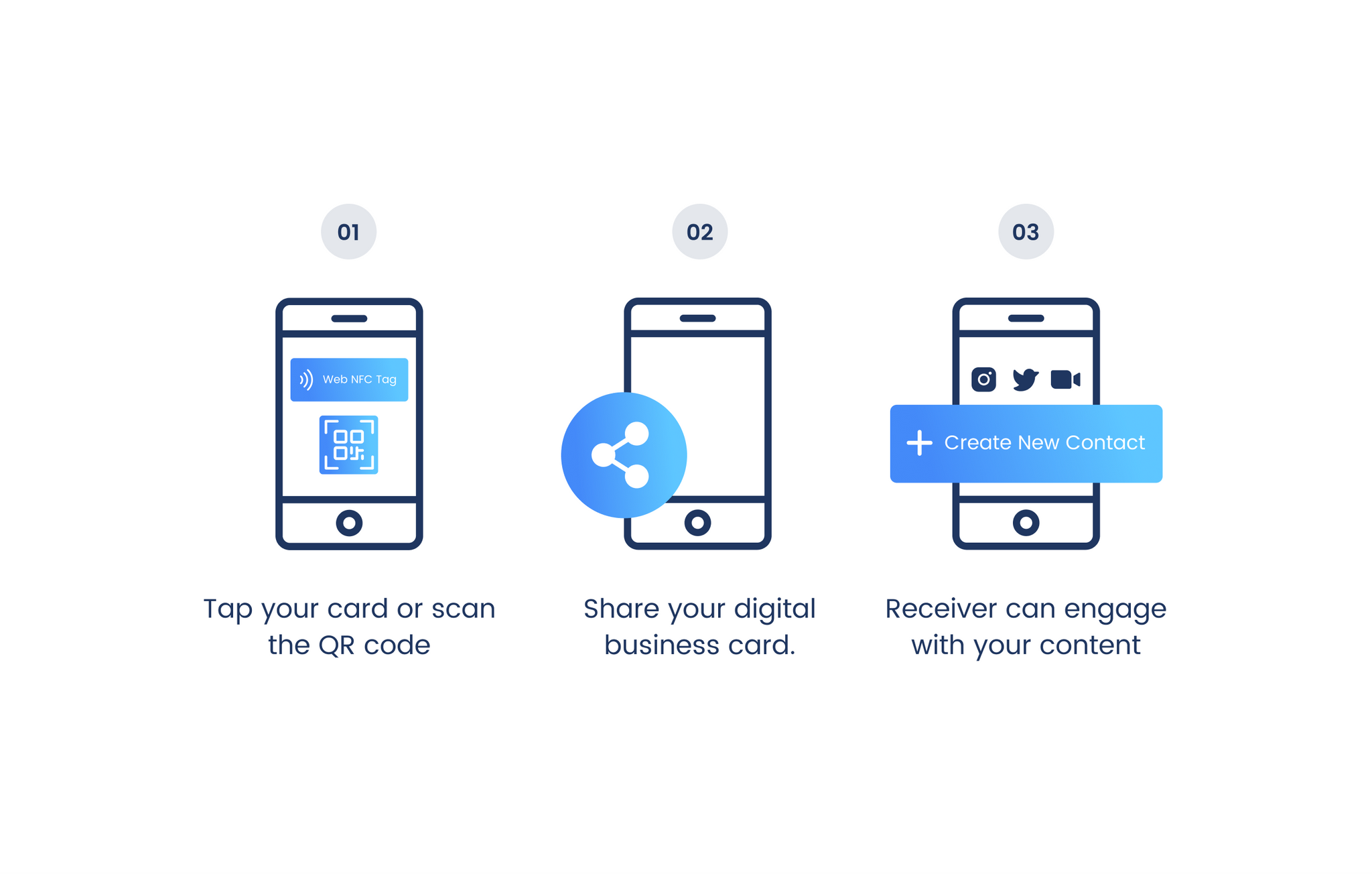
An EBC’s NFC chip contains an encoded link to the user’s virtual profile hosted by the card’s manufacturer. To use an EBC, the user holds or “taps” their card on or near a recipient’s NFC-enabled device for two seconds or less. The receiving device loads a virtual profile, giving the recipient the option to import the data to their contacts, open links, contact the cardholder, leave a review, or other actions. Alternatively, cards printed with QR codes will pass the link to the recipient through their camera, allowing the cardholder’s virtual profile to be transferred to non-NFC devices or older devices.
Upon detecting the link, the recipient’s device connects to the referred website and download the card holder’s profile in the form of a vCard, or VCF (Virtual Contact File). VCF is a common database structure containing various fields like the user’s name, contact details, web and social media links, and even some multimedia like profile photos and company portfolios.
What are the advantages of an electronic business card?
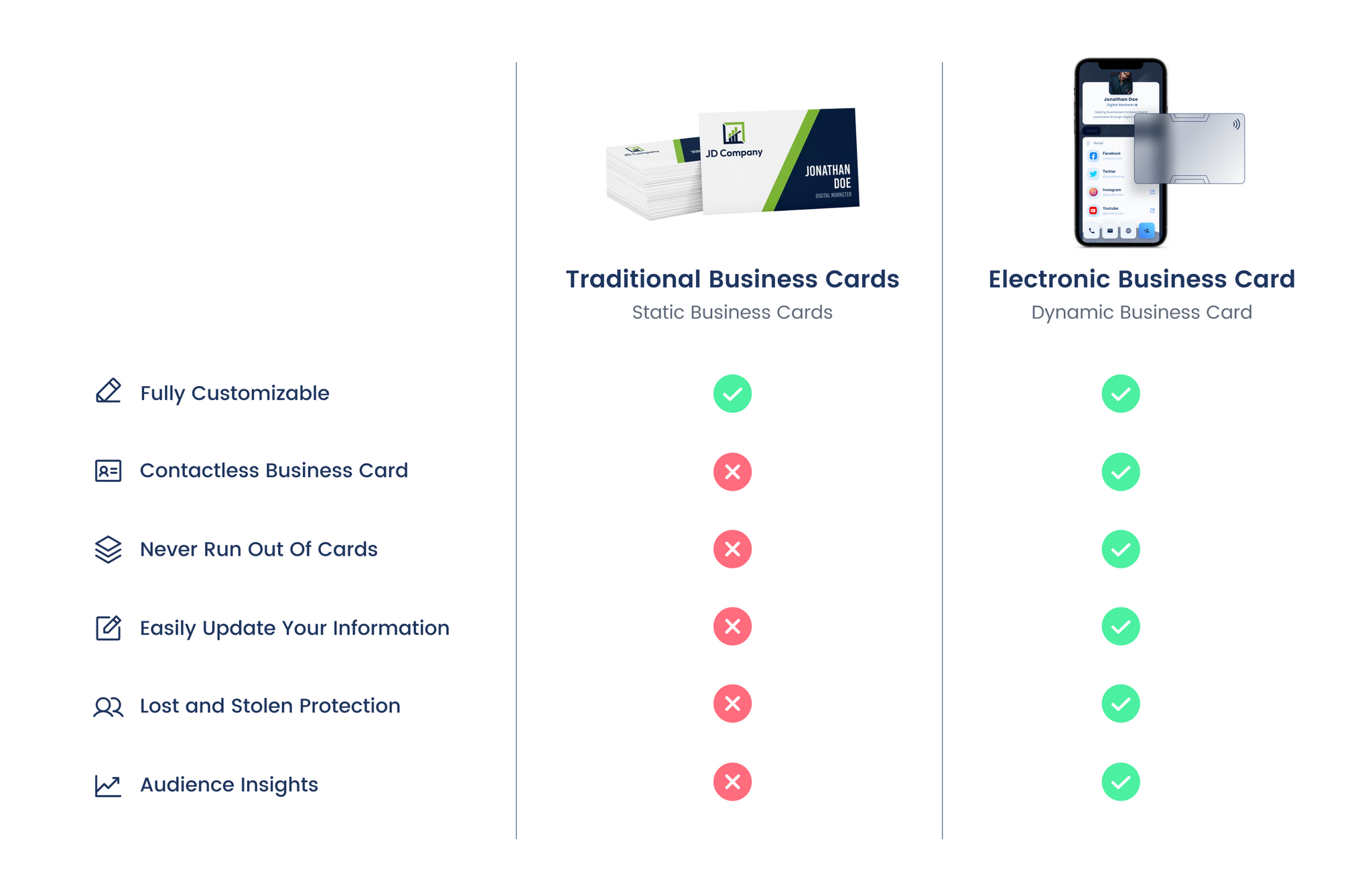
EBC’s offer multiple advantages over traditional paper business cards while still retaining their basic purpose—the face-to-face exchange of information.
Part of the allure of the business card, and one reason it has persisted as a networking tool for so long, is that it represents the “brand” of the cardholder in a uniquely personal way. The ability to customize an EBC with a logo, business color schemes, and other branding indicators serves this visual function well.
The EBC is always with its owner; there’s never a danger of running out of cards or having to reorder a new set. Additionally, the tap or swipe of an EBC allows the in-person transfer of information without the need for physical contact or the exchange of material items.
One of the clearest benefits of the EBCs, though, are their ability to deal with the dynamic nature of information in real time. Once a box of paper business cards is printed and shipped, the owner is stuck with them as they are. They may or may not need all of the cards ordered, and many go to waste if a change in branding or contact information renders them obsolete.
When an EBC holder makes a name change, gets a new phone number or email address, or even updates their profile photo, that information is immediately reflected in the next use of that same card. And any past recipients of the user’s vCard information can periodically refresh the original URL to download any changes.
EBC’s can also support multiple profiles for different purposes, allowing cardholders the flexibility to choose which profiles to share with which recipients. For example, users could create separate profiles for business and personal contacts.
What is the environmental impact of Electronic Business Cards?
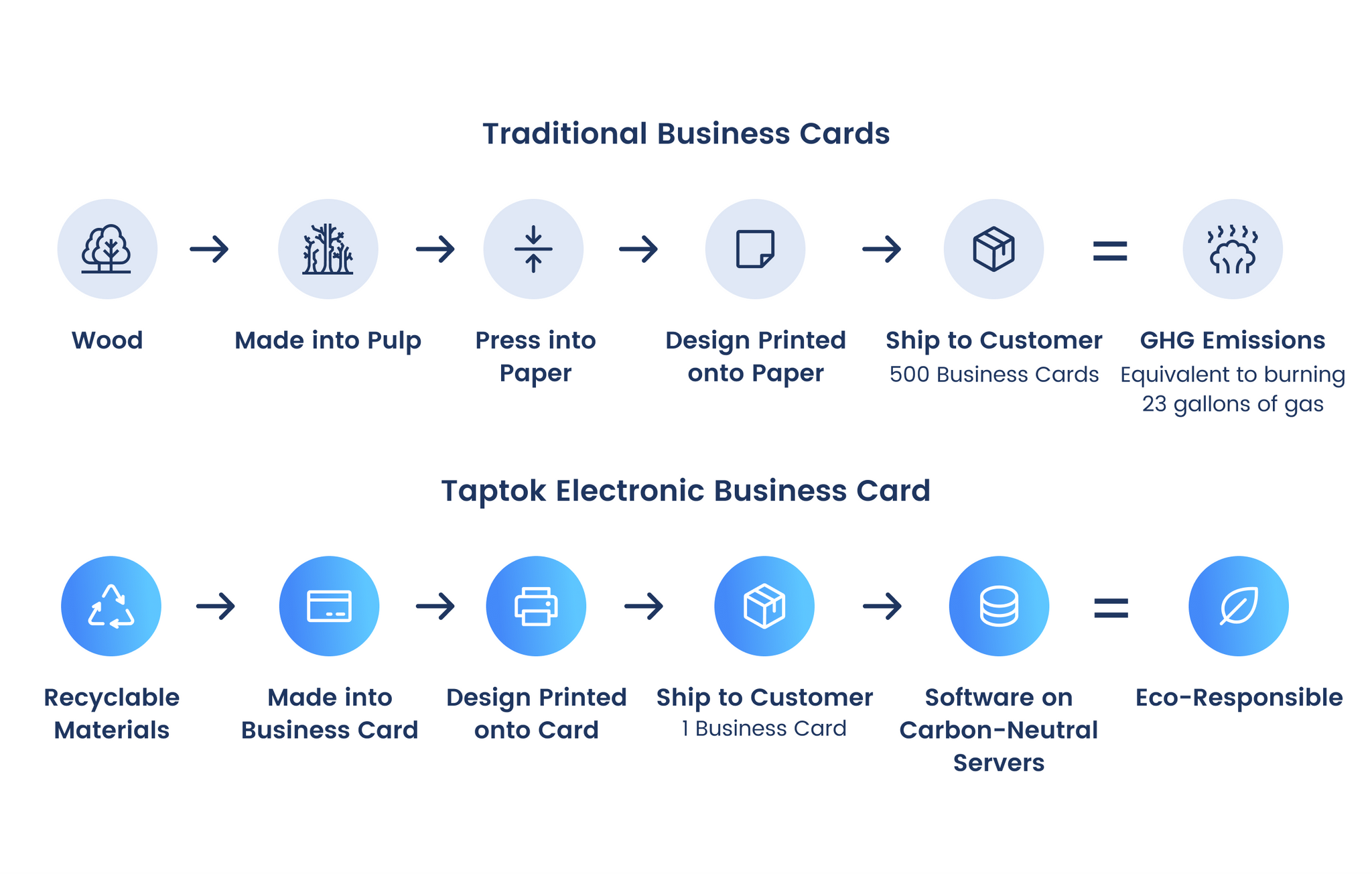
The life cycle of a typical paper business card is exceedingly wasteful. Wood and ink are obtained from the environment; wood is made into pulp then pressed into paper; a digital design is printed onto the cards, which are then sealed in a box and shipped to the customer.
A study shows that the lifecycle of a PBC results in about 0.411 equivalent metric tons of CO2 in greenhouse gas (GHG) emissions for every 1000 cards printed. That means that a typical box of 500 paper business cards has the equivalent GHG impact of burning about 23 gallons of gas. Considering that an estimated 88% of PBC’s are discarded makes that number even more significant.
The few paper cards that survive not being thrown out entirely end up scanned into an electronic device. That means millions of PBC’s annually consume natural resources and energy just to begin and end life as a digital file—with an unnecessary paper phase in between.
An EBC, by contrast, is only manufactured once regardless of the number of contact exchanges it undergoes during its lifetime. EBC’s can also be made with recycled or sustainable materials, further reducing their environmental impact. Changes in user details don’t necessitate a new card. While there is an energy cost in the housing of EBC software and profile data on servers, the increased availability of carbon-neutral server infrastructure make EBC’s an Earth-friendly alternative to wasteful PBC’s.
Are Electronic Business Cards secure?
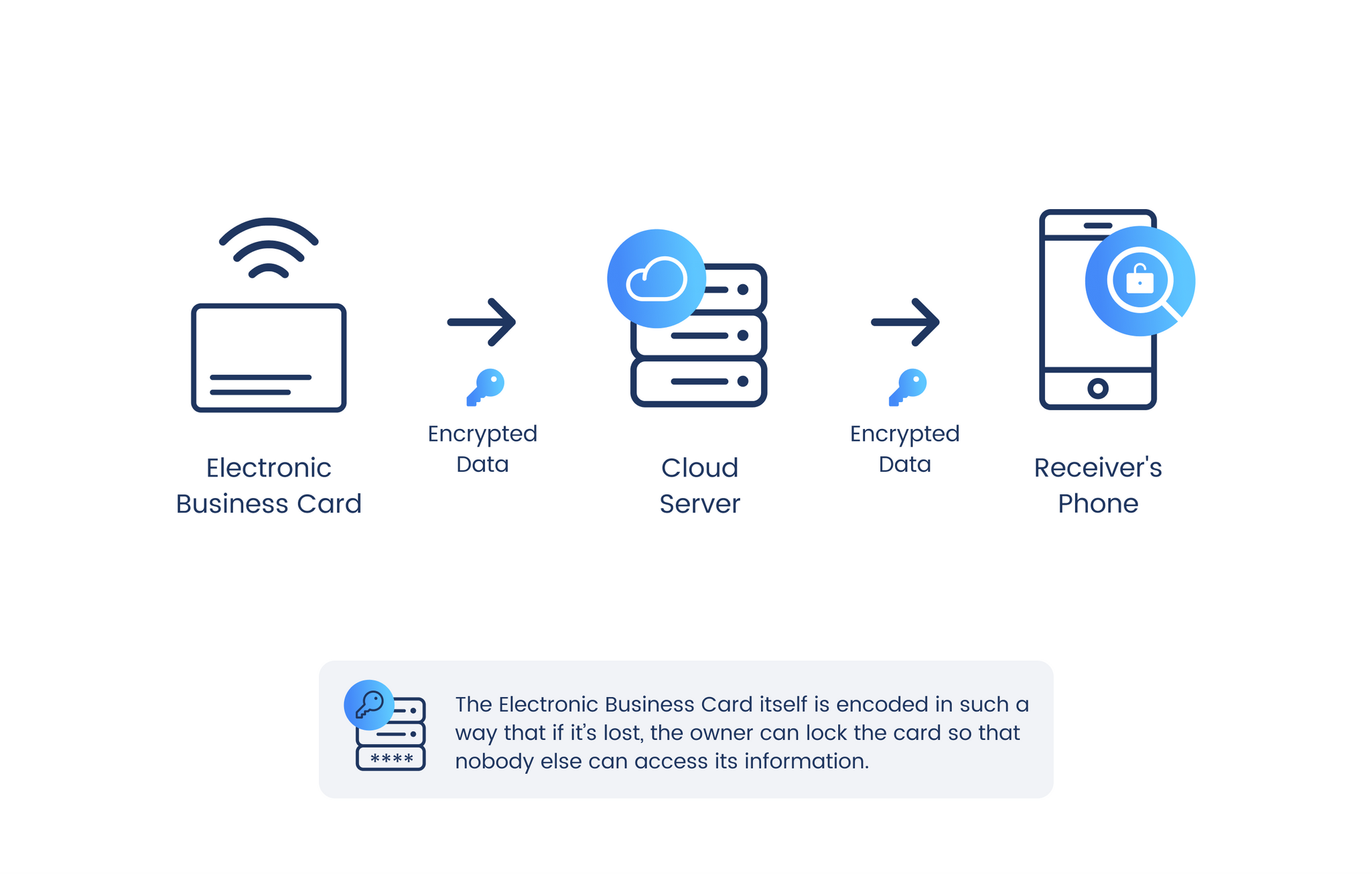
Data security and privacy are high priorities to many with today’s steady rise in cybercrime and identity theft. A device like an electronic business card that facilitates the transfer of information, along with its associated cloud software and data files, should have certain security features built into its design.
The EBC itself is encoded in such a way that if it’s lost, the owner can log into their profile and “lock” the card so that nobody else can access its information, either from the NFC or QR code. This means that even if the card is found by someone with bad intentions, the name, contact information, links, and all other vCard data remain private.
Also, all information in transit from the cloud servers to a recipient’s mobile device after a card tap or QR scan are encrypted, adding an additional layer of privacy for the cardholder.
Even in an era of remote work, virtual offices, and video meetings, people still view face-to-face connections as an important part of building both personal and business relationships. EBC’s integrate the physical and digital worlds, bringing the tradition of the business card exchange up to date with modern media, environmental consciousness, and privacy concerns.
In the next article, learn more about What is a Digital Business Card?

